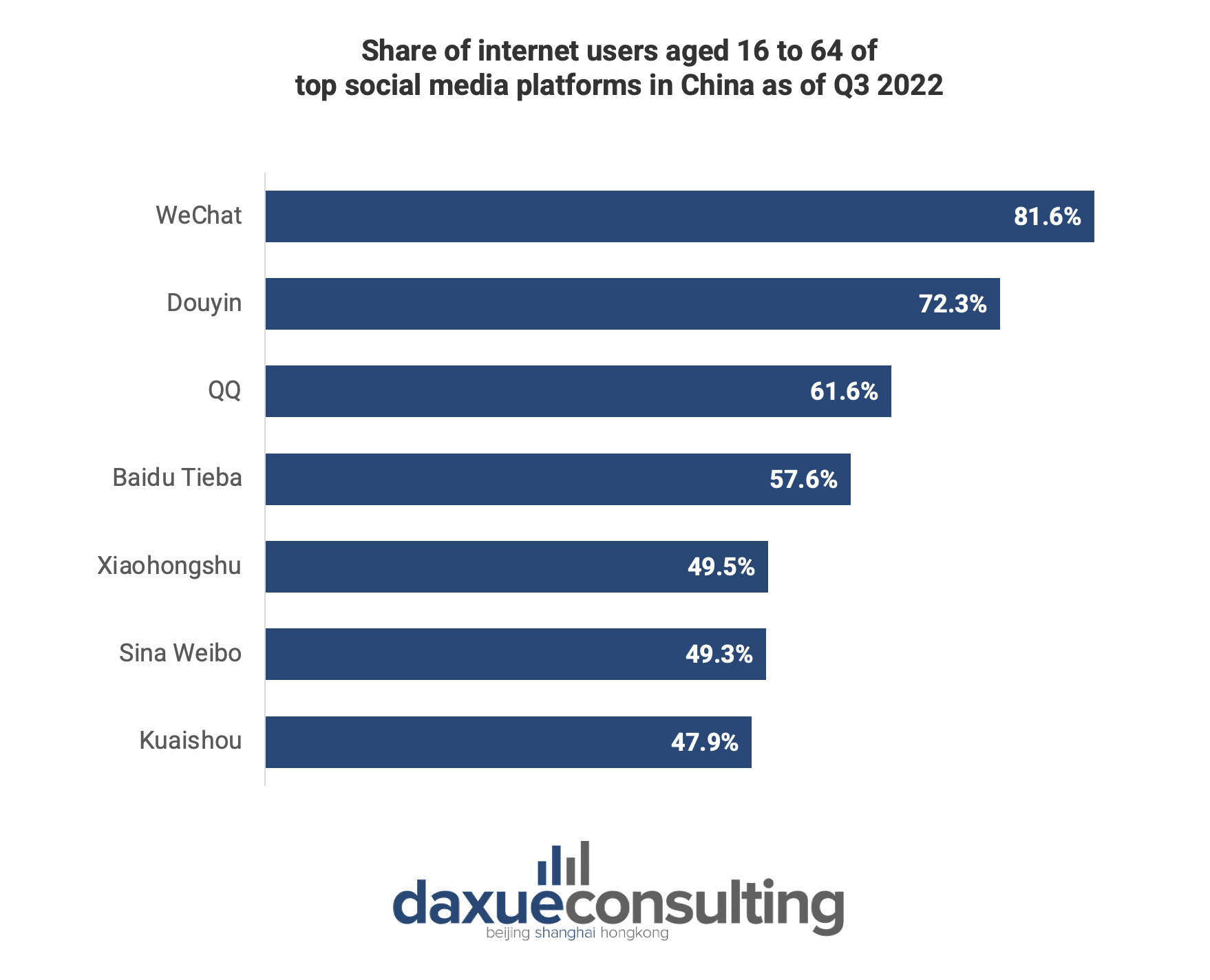China, a global economic powerhouse, presents immense opportunities for businesses looking to expand their reach and tap into its vast consumer market. Mastering lead generation strategies tailored to the Chinese landscape is crucial for success.
The unique characteristics and challenges of the Chinese market
With a population of over 1.4 billion people, China offers an enormous consumer market. However, it also means facing intense competition to capture consumers’ attention. Whether the target audience comprises individual consumers or businesses, achieving successful market entry and cultivating strong relationships necessitates an understanding and appreciation of Chinese cultural nuances.
China has a collectivist culture, emphasizing the importance of group harmony, family, and social connections. Decisions often hinge on personal connections and guanxi. Hierarchy and respect for authority figures also play a significant role in Chinese society. Business interactions typically involve showing deference to senior leaders and decision-makers, highlighting the importance of formality and etiquette. Additionally, “maintaining face” is crucial in Chinese culture. Therefore, it’s essential for businesses to avoid situations that could lead to a loss of face for themselves or their partners.

China’s unique internet landscape has shaped the preferences
The unique internet landscape in China significantly impacts lead generation. With over 1.1 billion internet users in 2022, of which over 96% access the internet via mobile phones, it’s clear that mobile optimization and targeted advertising are essential to engage this tech-savvy audience.
Chinese consumers actively embrace new trends, particularly evident in Gen Z, who are digital natives proficient in smartphone and social media usage. To effectively reach and engage this audience, businesses must prioritize a mobile-first approach, including creating mobile-friendly websites, developing apps, and optimizing content for digital channels.
Three dominant digital platforms to lead generation in China
In China, there are many digital platforms that offer opportunities for both B2C and B2B businesses to leverage for lead generation. E-commerce platforms, such as Alibaba’s Tmall and JD.com, have a strong presence in China. Online shopping is highly popular, providing opportunities for businesses to reach a wide audience. Moreover, leveraging social media platforms, such as WeChat, Weibo, and Douyin, can help businesses capture the attention and interest of the tech-savvy Chinese younger generations and business professionals.
WeChat is an all-in-one platform in China boasting more than 1.32 billion monthly active users (MAUs) as of 2023 Q2. It is used for a wide range of applications from paying bills to ordering food, shopping or just checking friends’ social media posts. Businesses can create official WeChat accounts, develop mini-programs, and use WeChat Moments ads to reach their target audience. Due to its extensive user base and versatile features, WeChat stands as an effective lead generation platform in China.
Douyin
Douyin, known globally as TikTok, is a short-video platform that has gained immense popularity among Gen Z and millennial users in China. It is projected that by 2025, Douyin will achieve 835 million users. As of November 2022, 54% of its users in China are male and one in every three are under the age of 26. It provides a highly engaging and visually-driven environment where businesses can showcase products or services creatively. By leveraging influencer collaborations, hashtag challenges, and advertising options on Douyin, businesses can effectively generate leads and capture the attention of a younger audience.

Baidu
Baidu, China’s leading search engine, is a crucial asset for foreign businesses aiming to connect with Chinese audiences online. Unlike Google, which faces accessibility limitations due to official blocks in China, Baidu enjoys widespread usage, commanding an impressive 55.8% share in 2022. Baidu is crucial for driving both organic and paid website traffic. Employing search engine optimization (SEO) techniques improves visibility in Baidu search results. Furthermore, Baidu offers various advertising options like pay-per-click (PPC) ads, display ads, and sponsored content, allowing businesses to precisely target keywords and demographics for lead generation.
Whether operating in the B2C or B2B sphere, harnessing the capabilities of Baidu is essential to reach and engage your Chinese audience.
Establishing trust with Chinese consumers is paramount for success
Establishing trust with Chinese consumers is of paramount importance for businesses in both B2B and B2C lead generation. Trust is highly valued in Chinese culture, emphasizing relationships, loyalty, and reputation. It serves as the cornerstone for long-term partnerships, which are vital in the competitive Chinese market.
Reviews, influencer marketing, and co-branding initiatives can significantly boost brands’ efforts to establish trust effectively. Customer reviews, for instance, provide authentic feedback that significantly influences potential buyers. Collaborating with Key Opinion Leaders (KOLs) or celebrities can extend your reach, given their resonance with Chinese consumers. Additionally, partnerships with respected local brands enhance credibility, as domestic companies enjoy high regard.
The art of mastering lead capture and conversion
Succeeding in lead acquisition and conversion in China can be tricky due to the market’s distinctive traits. Therefore, businesses need to implement a mix of strategies to boost their chances. When designing landing pages, attention to culturally tailored content is essential. This encompasses visual elements such as images, videos, or graphics aligned with Chinese aesthetics and cultural references. Moreover, the utilization of color schemes, symbols, or scenes associated with positive meanings in Chinese culture should be considered.
The same principle applies to advertising, a critical aspect of mastering lead capture and conversion in China. Businesses should strategically utilize localized content, language, and cultural references in their advertisements to effectively communicate their offerings. This approach distinguishes them from foreign competitors and solidifies their presence in the fiercely competitive Chinese market. A noteworthy example is Coca-Cola’s successful integration of Chinese cultural symbols and colors during Chinese New Year, which helped the brand show its commitment to the Chinese market and surf the Guochao trend.

Following lead acquisition, potential clients can be nurtured through personalized follow-ups via messaging apps like WeChat. It’s worth noting that email marketing in China distinguishes itself from Western practices, as Chinese netizens exhibit lower reliance on email communication. Consequently, WeChat, recognized as indispensable in mainland China, emerges as a more effective communication channel.
A glimpse into lead generation in China
- China has a distinct culture, language, and business etiquette, as well as market-specific challenges. Businesses need to understand and respect Chinese cultural nuances to enter the Chinese market and create solid relationships with Chinese consumers.
- China’s unique internet landscape has greatly influenced the lead generation in China. Chinese consumers heavily rely on smartphones for various activities, including online shopping, social media engagement, and accessing information.
- WeChat, Douyin and Baidu are three platforms offer diverse opportunities for businesses to lead generation in China and it’s crucial to take into account the particular traits and preferences of each platform’s user base when creating methods.
- Developing a relationship of trust with Chinese customers is critical to achieving success. In order to create trust, particular consideration should be given in areas such as customer reviews, endorsements from influential people, and relationships with local brands.
- To successfully acquire leads and convert them into customers in China, the following tactics should be prioritized: enticing landing pages, localized advertisements, and personalized follow-ups.





